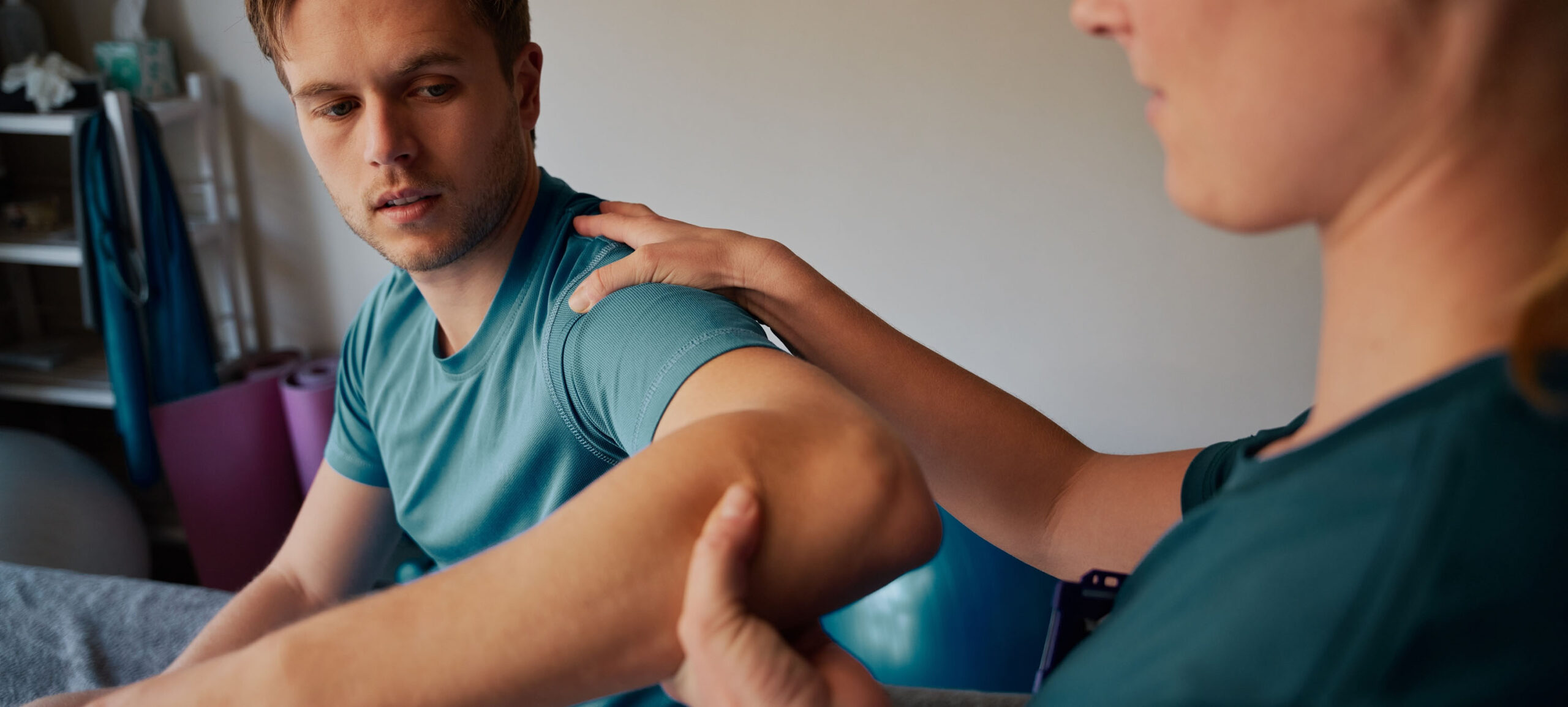Interested in seeing if you or a loved one qualifies for a spasticity clinical trial? Fill out the survey to see if you qualify.
Potentially new treatments bring hope for those living with upper limb spasticity

The unwanted muscle tightness and spasms that are characteristic of spasticity can make you feel like your body is working against you. And it doesn’t … just involve involuntary spasms; spasticity includes increased muscle tone, stiffness, and resistance to stretch, and can prevent you from navigating daily life with ease. If you or a loved one have upper limb spasticity caused by a brain or spinal cord injury that limits your ability to move, you could potentially be a fit for a clinical research study, also called a clinical trial, for people living with spasticity. By participating in clinical trials, individuals can help researchers advance our understanding and contribute to the development of potential new ways to treat spasticity.
How Clinical Trials Work
Thank you for your interest in learning more about clinical trials for spasticity! Every day, academic institutions, pharmacological organizations and private research facilities across the country are diligently working on making scientific breakthroughs in various clinical trials.
Here’s a look at what a clinical trial for movement disorders might involve:
WHO CAN PARTICIPATE?
Here are the qualifications interested potential participants need to meet in order to join a clinical research study for spasticity:

- Be 18 years of age or older
- Have been diagnosed with a neurological condition (affecting the brain or spinal cord) that causes spasticity in the arm and shoulder
- If taking a spasticity medication (e.g., baclofen) orally, have been on a stable dose for at least 4 weeks, or 6 months in the case of an intrathecal baclofen pump
- Have not had Botulinum-based neurotoxin injections (e.g. Botox, Dysport, etc.) in the last three months
Learn more about if you or a loved one may be eligible for participation in a clinical trial.
Clinical Trials Make A Difference
Participation in a clinical study provides valuable information that could eventually lead to a better treatment and — with the right breakthrough — to better outcomes. Take our short survey to see if you or a loved one may be a good fit. There is no obligation.
UNDERSTANDING SPASTICITY
Spasticity is a neurological condition which causes the muscles in the body to become stiff and tighten up, leading to difficulty and pain upon movement (and sometimes while at rest). It can affect not only movement but also speech, and is associated with damage to the brain or spinal cord. These involuntary muscle movements remain contracted and resist being stretched out, which is why spasticity interferes with not only regular movement, but can also affect speech and gait (how you walk).
HOW IS IT TREATED?
Treatment for spasticity involves a variety of approaches, such as exercise, physical/speech/occupational therapies, medication, the use of casts and/or braces and assistive devices, and even surgery. Often, it may be a combination of therapies. Healthcare providers may also prescribe oral medications as well if spasticity is causing disruptions to daily functions or sleep, however they can cause side effects like drowsiness and weakness. Injections of botulinum-based neurotoxins (e.g. Botox, Dysport) into spastic muscles are also utilized with limitations (like having a variable duration of effectiveness, side effects). Phenol is also used to treat spasticity that may cause permanent nerve damage along with other side effects. Spasticity severity varies from person to person, but since there is no cure, the goal of these treatments is to help lessen symptoms and attempt to improve patients’ quality of life. In recent years many people have turned to clinical trials to shed more light on spasticity, and the best ways to manage it.1.
HOPE FOR THE FUTURE
Research teams across the country are studying new ways to treat spasticity. Clinical trials play a vital role in evaluating the safety and effectiveness of these potential treatments and in helping to bring them to patients who need them. Patients living with spasticity caused by a brain or spinal cord condition could potentially play a part in that research effort, and contribute to advancing treatment options that may one day be able to help.
Spasticity affects more than 12 million people globally, including approximately 35% of people who have had a stroke, 50% of people with traumatic brain injury, 40% of patients with spinal cord injury. 2.
- Source: https://my.clevelandclinic.org/health/symptoms/14346-spasticity
- Source: https://www.aapmr.org/docs/default-source/default-document-library/aapmr-spasticity-summit-background-paper_final_branded.pdf?sfvrsn=3ce7317c_0
FREQUENTLY ASKED QUESTIONS
How does spasticity affect a person?
Signs of spasticity may include:1.
- Muscle spasms (which can be quick or continuous)
- Involuntary muscle contractions
- Increased muscle tone, known as hypertonia
- Abnormal posture
- Contracture (a long-lasting structural change, shortening of muscles, tendons, or other soft tissue, from prolonged spasticity, immobility)
- Difficulty performing daily activities, such as dressing and bathing
- Disruption in sleep (often due to muscle spasms, pain, or tightness)
- Muscle, joint and/or bone deformities
1. Source: https://my.clevelandclinic.org/health/symptoms/14346-spasticity
Who might be able to qualify for a clinical trial to better understand and treat spasticity?
You should consider applying for a clinical study if you or a loved one:
- Are 18 years of age or older
- Have been diagnosed with a neurological condition (affecting the brain or spinal cord) that causes spasticity in the arm and shoulder
- If taking a spasticity medication (e.g., baclofen) orally, have been on a stable dose for at least 4 weeks, or 6 months in the case of an intrathecal baclofen pump
- Have not had Botulinum-based neurotoxin injections (e.g. Botox, Dysport, etc.) in the last three months
What will happen during a clinical trial for spasticity?
Most clinical trials will involve frontline screening to confirm that a potential patient is, in fact, a match for that study’s criteria. Once verified and the patient has signed an Informed Consent Form, which clearly provides the details and purpose of the study to that individual and what it involves, participants can expect to attend scheduled appointments at a clinician’s office. They will also receive an investigational treatment or a placebo, and undergo additional screening and regular follow-up monitoring from a clinician and/or research staff. Throughout the study, participants should expect to enjoy a safe, professional clinical environment, and be treated with compassion and respect.
Are there any costs to participate in a clinical research study?
In almost all instances, there is no cost to participate in a clinical trial. Participants receive all study-related medical care and medications for the duration of the study at no cost. Likewise in certain instances, patients may also receive reimbursement for study-related time and travel.
Still Have Questions?
Contact us anytime at help@clinicalenrollment.com.

